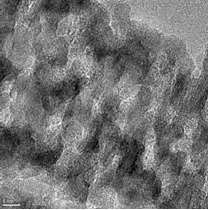Dry Reforming of Methane (DRM)
The classical OCM process (see D1-1) as a stand-alone process is characterised by low methane conversion (less than 40 %) and considerable CO2 production such that a costly separation and purification unit is needed. Additionally, residual methane has to be recycled.
A distinct improvement might thus be achieved by the coupling of the OCM process with additional catalytic processes. Therefore we will investigate conversion routes of CO2 as the main product of the OCM process and CH4 through combination of OCM with dry reforming of methane (DRM).
Research goals
- In analogy to OCM, the DRM process will be analyzed by a multi-scale approach ranging from elementary reaction in model systems to real processing conditions including catalyst formulation, reactor design, and process engineering.
- Model systems including those in gas phase and on well-defined surfaces will be studied to elucidate the binding configuration and electronic structure of CO2 on different transition metal oxides.
- A microkinetic model will be extracted from the kinetic data of surface and homogeneous gas phase reactions and studies on different model systems. Together with theoretical calculations, this kinetic model will be used to narrow the combination of elements in the catalyst by delineating the range of suitable high energy sites with only basic properties on the one hand, or alternatively with redox activity to avoid formation of low-valent carbon-forming sites on the other hand.
 |
- On the basis of these results the synthesis of a catalyst with a controlled hierarchical structure (see Figure) suitable for performance tests will be carried out. Mesostructured support materials will be generated and carefully activated to withstand the high operation temperatures.
- A detailed kinetic analysis in laboratory and mini-plant dimensions will be used to evaluate performance conditions and to identify parameters for possible coupling of OCM with DRM.
